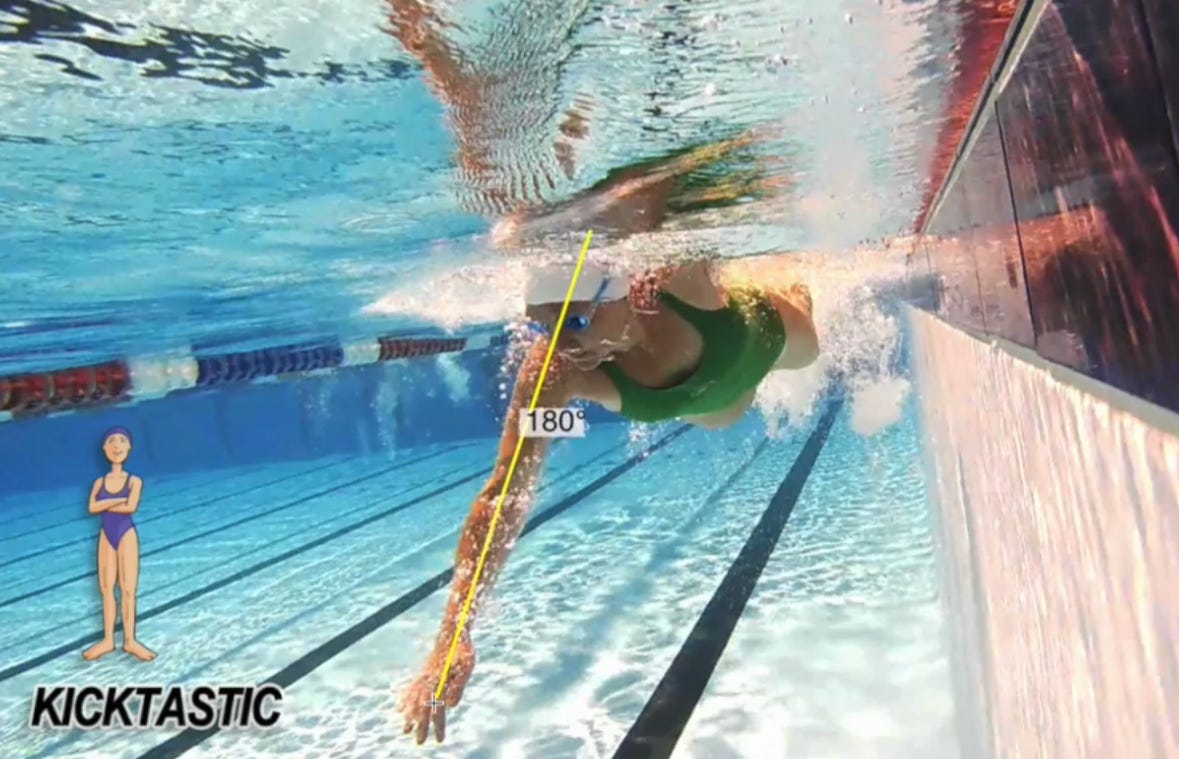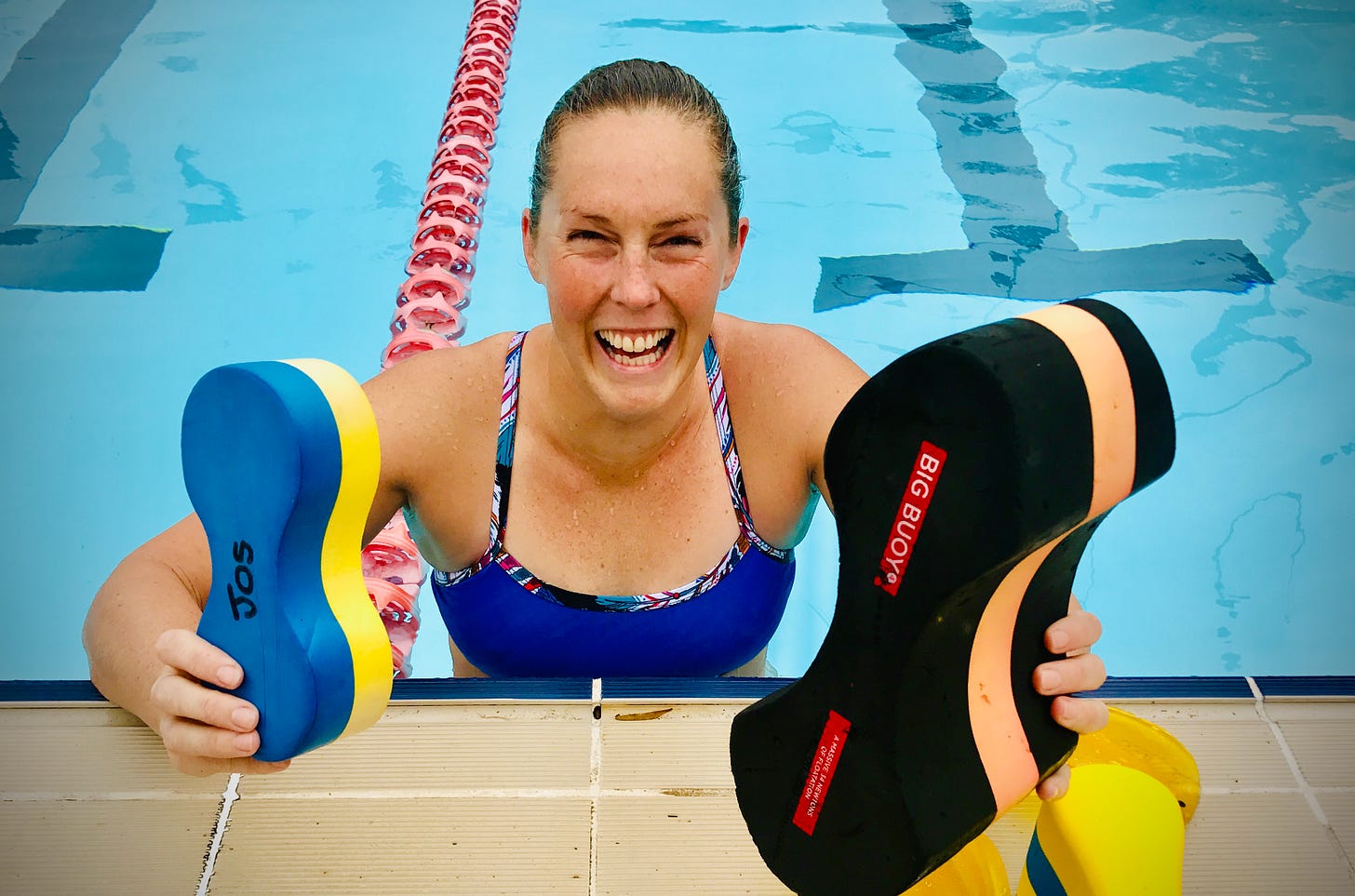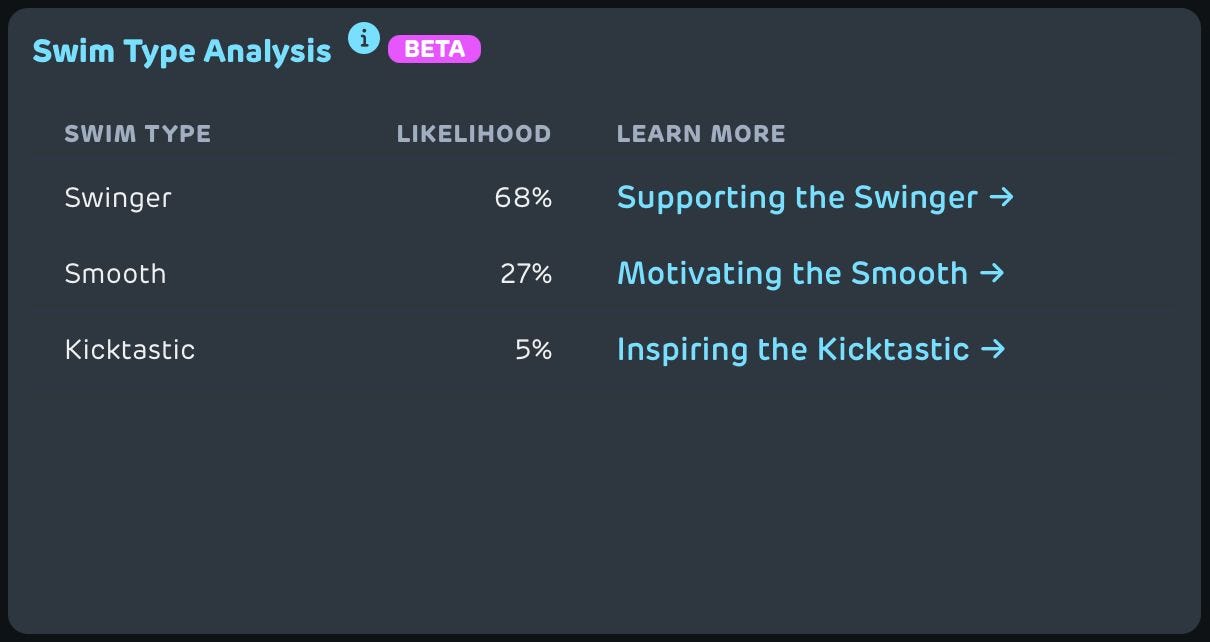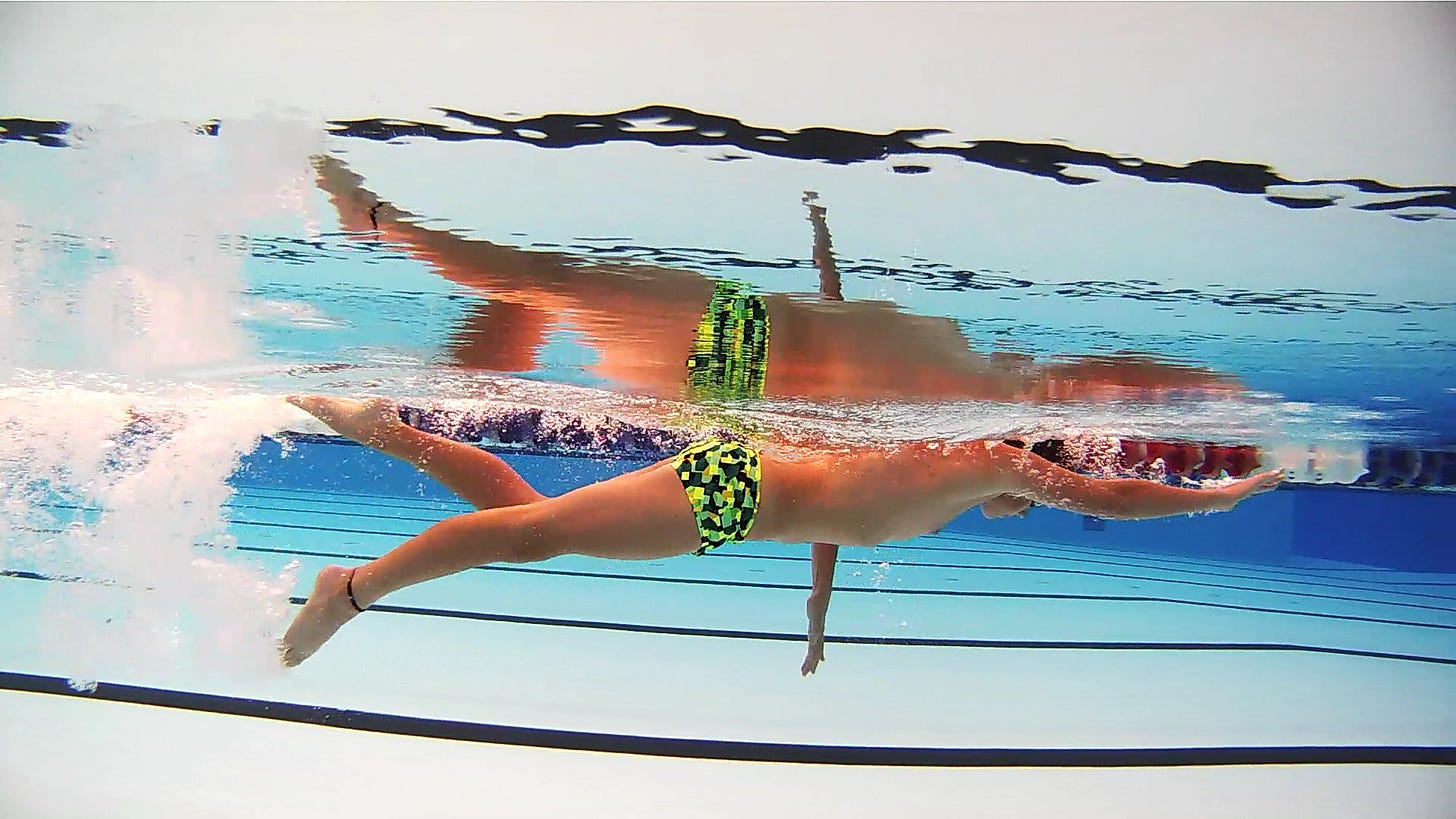🔷 Pull Buoy + No Kick = "Kicktastic" - How Can This Possibly Be?!
Your Swimming Questions Answered!
Hey Swimmers,
In last week’s blog we detailed how our Certified Coaches and the Swim Smooth GURU are using data-driven insights about your swimming to better determine your Swim Type and how to improve in 2025. It caused quite a stir.
We had plenty of questions and feedback - thank you 🙏 - but today I wanted to focus on one specific question which will allow us to expand on several keys areas to help your swimming, no matter what your Swim Type, and especially if you’re someone who ‘straddles’ 2 or more Swim Types:
“Hi there, I’ve been using the GURU for a while now after reading you guys’ book. I am qualified as mainly Kicktastic while using a pull buoy and not kicking. I don’t get how this can be? I try to work towards a Smooth / Swinger but does not seem to successfully progress towards this direction. Any help would be welcome.
Cheers guys from France, Pierre
We’ll unwrap this for Pierre (and you!) in a moment, but first let’s understand more about how the remote diagnosis of your Swim Type works.
Way Back When…
When we launched Swim Types in 2010, our goal was to systemize individualized coaching. Swim Smooth was already six years old, but we needed a way to ensure our Certified Coaches delivered a consistently high standard worldwide, all based off the same nomenclature.
By identifying whether you’re an Arnie, Bambino, Kicktastic, Overglider, Swinger, or Smooth, Swim Types makes sense of your unique stroke, allowing for tailored training. It also equips our coaches to pinpoint faults and provide clear, actionable advice, ensuring you get the best coaching—wherever you are.
Back then, we used three methods to identify your Swim Type:
Detailed Profile Descriptions
Our Quick Observation Sheet
The Swim Type Diagnostic Questionnaire, featuring a proprietary algorithm to estimate your percentage confidence match to each Swim Type

The original Swim Type diagnostic questionnaire provided useful insights but was always a guide rather than a strict classification. It estimated your likely Swim Type, but results could vary—especially if you showed traits from multiple types. Accuracy also depended on the quality of data entered, such as 400m swim time and stroke count.
While the questionnaire was a good starting point, the most precise assessment (still to this day) comes from working with a Certified Swim Smooth Coach:
Through detailed video analysis and expert guidance, our Coaches identify stroke inefficiencies and tailor their coaching beyond what the questionnaire could determine. You may not be explicitly labeled as a certain Swim Type during a session, as our coaches use the framework as a foundation, refining their advice to suit you as an individual for the most effective improvement. And that, of course, has always been our goal.
As a remote-access compliment to our Coaches, the Swim Smooth GURU uses our patented Stroke Insights℗ on the device you already own after each swim, to analyze your actual stroke technique and apply our proprietary understanding of common faults for a more targeted improvement plan—an approach we continue to refine, as denoted with the “beta” badge.
So, How Can I Be “Kicktastic” When I’m Not Even Kicking?!
Let’s start to answer this question by looking at these two images of the same swimmer: 1) swimming with a pull buoy (hips very high); 2) swimming without a pull buoy (hips very low):
On face value, you might well diagnose the swimmer above to potentially be an Arnie - someone who benefits a lot from using a pull buoy to reduce drag. However, these two still images don’t allow us to see the very pronounced pause and glide that this swimmer actually has at the front of his stroke. As such, we’d more likely refer to them as an Arnie-Overglider - someone who likely started their adult swimming journey as an Arnie but followed a little too much advice to lengthen and glide. This is a very common pathway to see people take, maybe you see yourself here?
In any case, they look very different to this image of a true Kicktastic (below), where you don’t need to see the video to see how much effort is going into that kick, and also why they might have developed this tendency due to the brake-like position of their right hand:
So how can our friend Pierre from France have got such a ‘weird’ diagnosis from the GURU when he says he only ever swims with a pull buoy?
Here’s my exact response:
Hey Pierre. Thanks for reaching out. Is there a specific reason you’re using the pull buoy all the time? The Swim Type analysis works off the assumption that you are swimming full stroke freestyle as there is no way for the watch to know you’re not kicking. We use a range of factors to then determine your Swim Type, notably your speed and Stroke Insights℗ have a heavy bearing. If the pull buoy is being used to offset low sinky legs (more of an Arnie trait) it is likely speeding you up into the Kicktastic speed range (see image 1 below). If you’re using a compatible device for Stroke Insights℗ and using a deep pull, this will further point the system in that direction (see image 2 below). As such, some of your progress will be masked with the use of the pull buoy. Have you considered buoyancy shorts as an alternative? You’re still likely to get some erroneous results given the speed differential that the shorts will give you. Does this all make sense? Your Coach, Paul.

Arnie VS Kicktastic - the Ultimate Litmus Test
It’s fair to say that some Arnies who have a real tendency to pace themselves poorly, will often present with a very strong kick over the first 100 to 200m. However, this soon drops off when the effort level catches up. A Kicktastic on the other hand always appears to be pushed from behind by their kick, a little like they’re “rear-wheel” driven.
But you only have to ask one question to really differentiate - OK, maybe two:
Are you faster with a pull buoy?
Do you like swimming with a wetsuit and does it make you much faster?
If the answer is a very quick and affirmative “yes”, you’re definitely more of an Arnie. If the swimmer gives a puzzled look and has to think about the question, much more likely they’re a Kicktastic.
For this very reason, back in 2011 our good friend and owner of HUUB wetsuits, Dean Jackson, asked us to employ this insight into a range of wetsuits tailored to a swimmer’s Swim Type and buoyancy profile. We knew for sure that there was a sector of the open water swimming community who disliked the high buoyancy of a standard wetsuit (5mm in the legs), so we suggested making a low buoyancy wetsuit specifically for these swimmers (3mm in the legs). Others said it’d never work as “everyone loves a wetsuit”, but Dean knew that we knew otherwise, and thus was born the “Aura 3:3” (female) and “Agilis 4:4” and “OWC” (men) which went on to become best sellers.
Key Take-Aways for Arnies & Kicktastics:
If you’re like me, you’re probably thinking a lot lately about the PROs and CONs of Artificial Intelligence (A.I) in our daily lives. In many ways Swim Types has been the original A.I-powered swim coaching for nearly two decades, providing a structured yet adaptable framework that allows coaches to analyze stroke technique, identify inefficiencies, and deliver highly individualized feedback—long before machine learning and data-driven insights became mainstream in sports coaching.
But is Swim Types the be-all and end-all? No—but it’s an incredibly powerful tool. Just like A.I, it doesn’t replace human insight; instead, it helps steer the path forward.
For swimmers like Pierre, who might be confused by a Kicktastic diagnosis despite always using a pull buoy, a deeper understanding of what’s happening behind the scenes can reveal the real issue—his speed improvement with the pull buoy is shifting him further into the Kicktastic range, but this is likely masking key technique faults. While the buoyancy helps lift his body position, it may be covering up underlying inefficiencies such as poor breath control, a high head position, and limited lower body flexibility. Addressing these areas (body willing) will lead to genuine, sustainable improvements, rather than relying on the pull buoy to compensate for weaknesses.
Until next week,
Swim Smooth!
Keep reading with a 7-day free trial
Subscribe to Weekly Blog by Swim Smooth to keep reading this post and get 7 days of free access to the full post archives.










